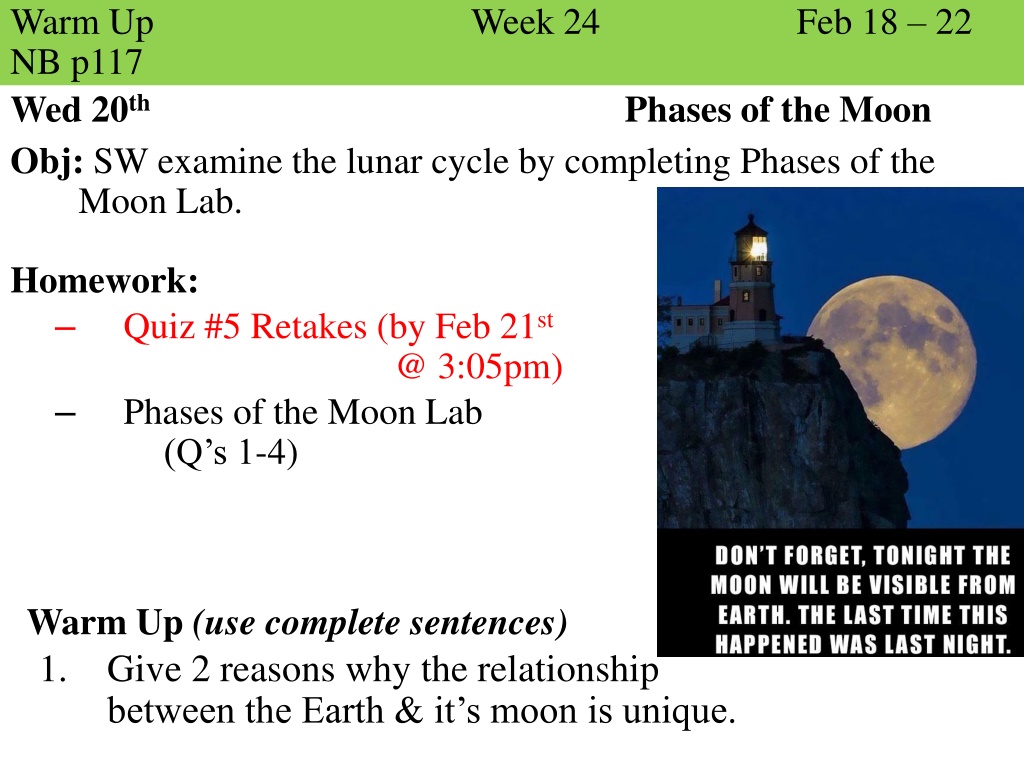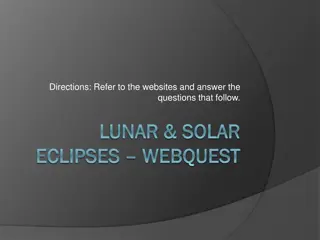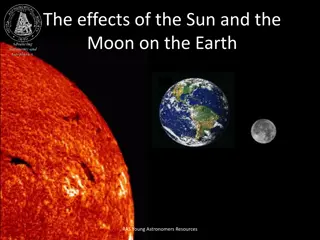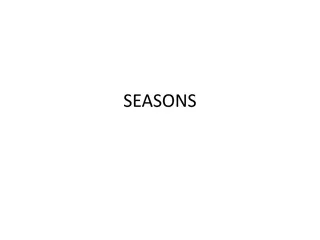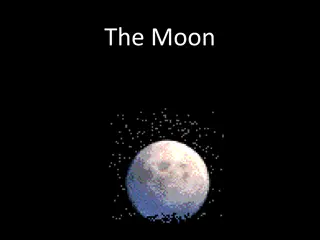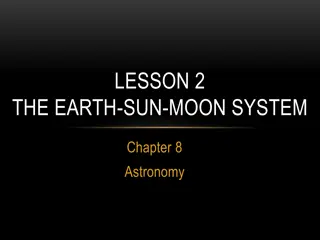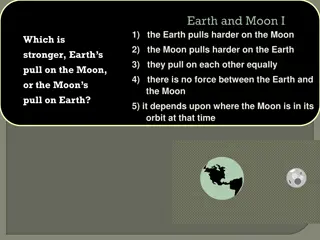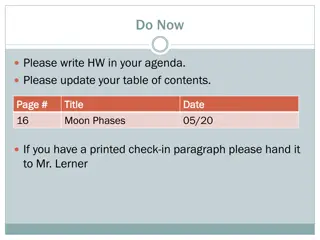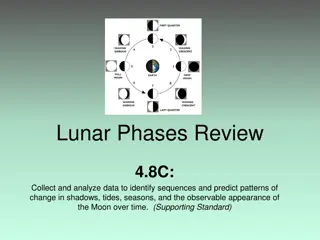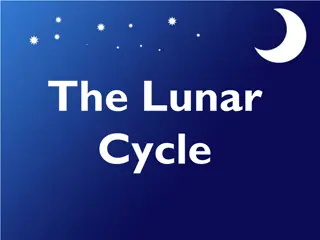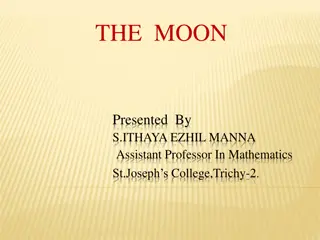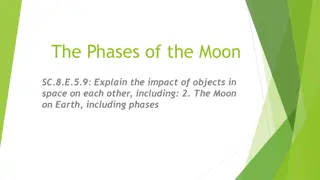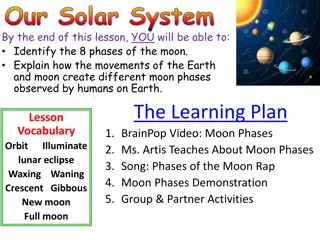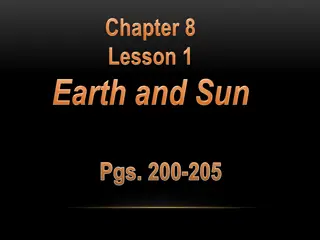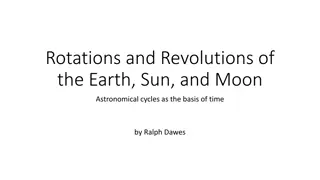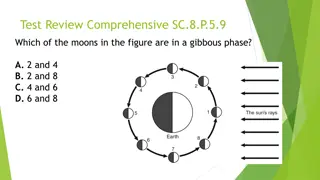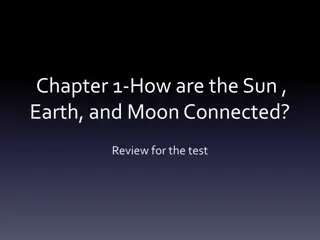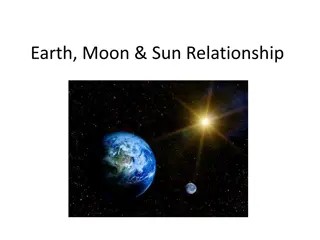Understanding the Unique Relationship Between Earth and the Moon
The lunar cycle and the changing phases of the Moon are explored through lab activities in this science class. The distinctive relationship between Earth and its moon is highlighted as students complete assignments and quizzes related to this celestial phenomenon. Images and diagrams illustrate how the moon's appearance shifts as it orbits the Earth and the Sun, impacting its visibility from our planet.
Download Presentation

Please find below an Image/Link to download the presentation.
The content on the website is provided AS IS for your information and personal use only. It may not be sold, licensed, or shared on other websites without obtaining consent from the author. Download presentation by click this link. If you encounter any issues during the download, it is possible that the publisher has removed the file from their server.
E N D
Presentation Transcript
Warm Up NB p117 Wed 20th Obj: SW examine the lunar cycle by completing Phases of the Moon Lab. Week 24 Feb 18 22 Phases of the Moon Homework: Quiz #5 Retakes (by Feb 21st @ 3:05pm) Phases of the Moon Lab (Q s 1-4) Warm Up (use complete sentences) 1. Give 2 reasons why the relationship between the Earth & it s moon is unique.
Table of Contents NB p111 Date: 2/12 2/12 2/14 2/19 2/19 2/20 Title: Page: Wk 23 Warm-ups Video Notes Secrets of the Sun Video Notes - If We Had No Moon Wk 24 Warm-ups Notes The Moon Lab Exploring the Lunar Cycle 115 116 117 118 119 120 Agenda *Collect Unit 5 Vocab * Lab Exploring the Lunar Cycle (Phases of the Moon)
Position of the Moon Side Lit ( Rt / Lf ) Amount Lit Phase of the Moon You will not fill in this column until tomorrow 1. Facing the Sun 2. 1/8thTurn CCW 3. 2/8thTurn CCW 4. 3/8thturn CCW 5. 4/8thturn / Facing away from the Sun 6. 5/8thTurn CCW 7. 6/8thTurn CCW 8. 7/8thTurn CCW
*Orbiting of the moon causes it to go through phases which changes it s appearance from day to day. How the moon appears depends on where it is relative to the sun and the earth.
View from Earth Moon s Actual Position
